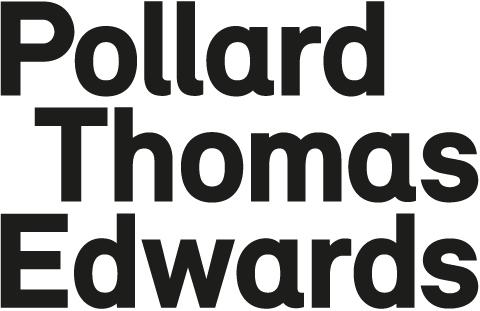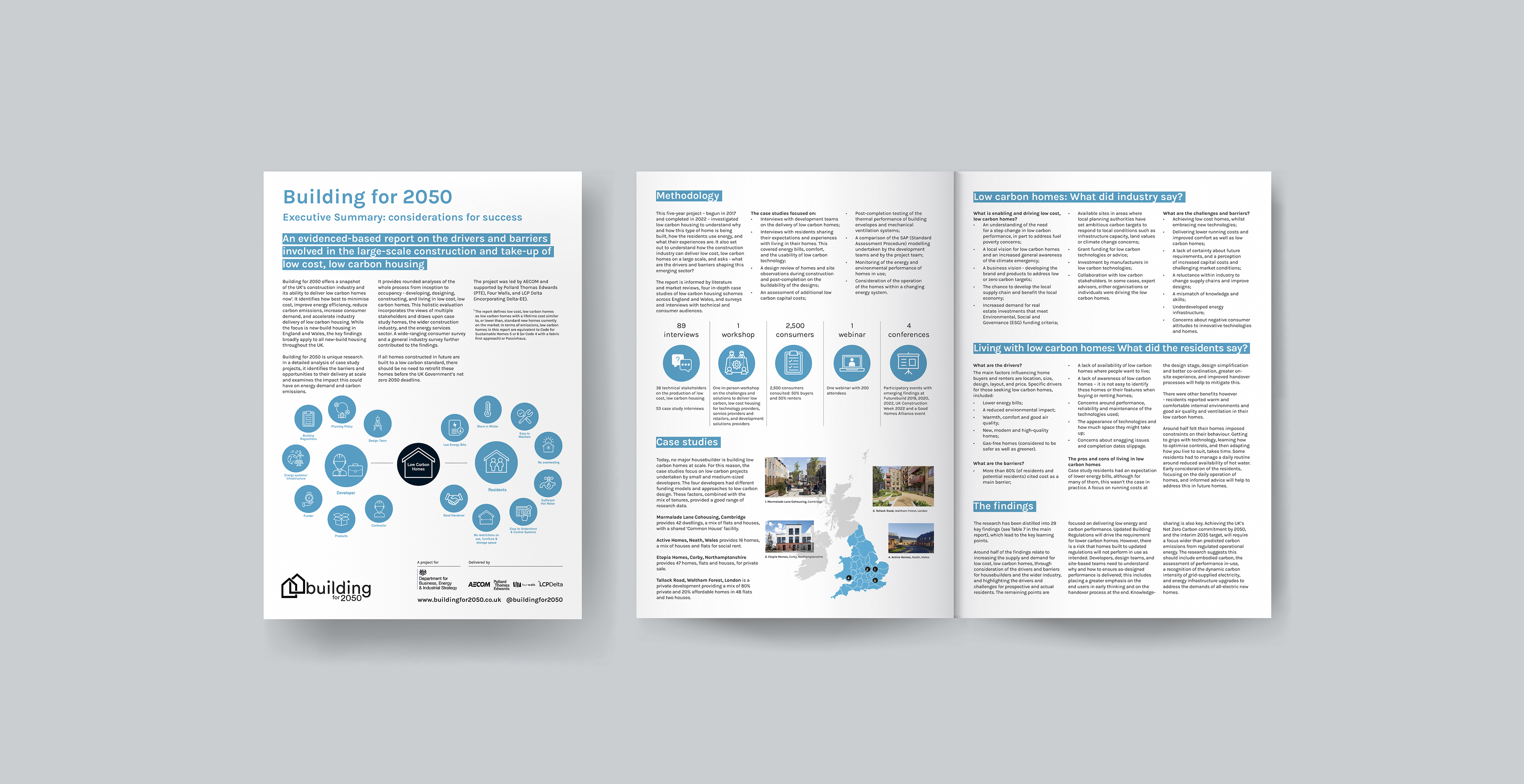
Building for 2050 is the UK Government’s evidenced-based report on the drivers and barriers involved in the large-scale construction and take-up of low cost, low carbon housing
That’s why we’re boosting investment in energy efficiency with an extra £6 billion, on top of the £6.6 billion we are already spending this Parliament which will help us on our journey to cutting emissions from UK buildings by 15% by 2030.
This research is important to building our understanding on the best way to deliver low-carbon strategies for new homes as we continue reducing the country’s contribution to climate change by 2050.

Building for 2050 provides a snapshot of the UK’s construction industry and its ability to deliver low carbon homes now. This ground-breaking report identifies how to minimise cost, improve energy efficiency, reduce carbon emissions, increase consumer demand, drive growth, and accelerate industry delivery of low carbon housing. While the focus is newbuild housing in England and Wales, the key findings broadly apply to all newbuild housing throughout the UK.
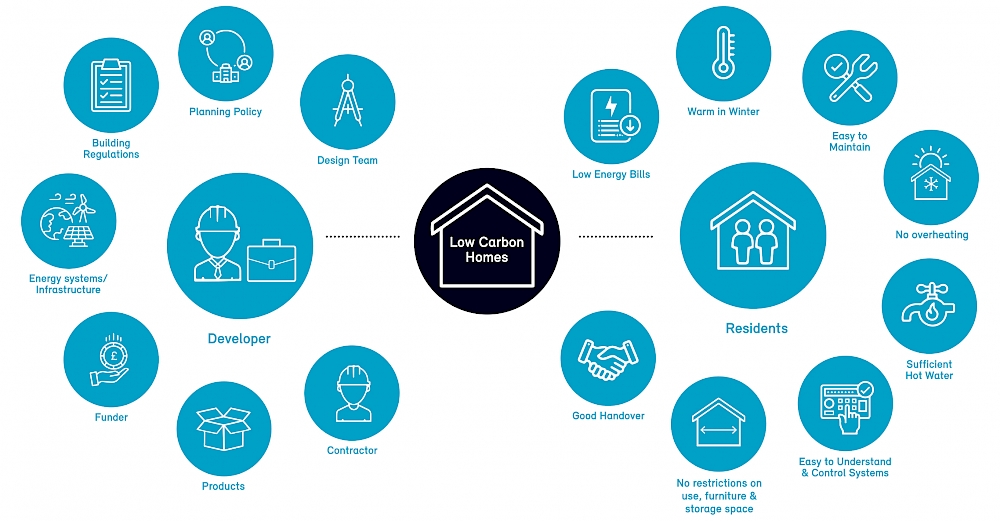
From exploring pros and cons of living in low carbon homes to underlining the importance of local planning policy to catalysing the development of lower carbon homes, the in-depth report benchmarks the British construction industry’s ability to mitigate the impact of climate change.
Crucially, Building for 2050 makes clear that if all homes constructed in future are built to a low carbon standard, there should be no need to retrofit these homes before the UK Government’s net zero 2050 deadline. Yet the report also identifies significant skills gaps across the construction industry and makes clear that performance gaps – the difference between a building’s predicted and actual energy use – are still commonplace in newbuild developments.
Building for 2050 was commissioned by BEIS in 2017 and completed in 2022. In a detailed analysis of case study projects – small-scale housing developments in Cambridge, Neath, Corby, and London’s Waltham Forest, it identifies the barriers and opportunities to their delivery at scale and examines the impact this could have on energy demand and carbon emissions. It provides rounded analyses of the whole process from inception to occupancy - developing, designing, constructing, and living in low cost, low carbon homes.
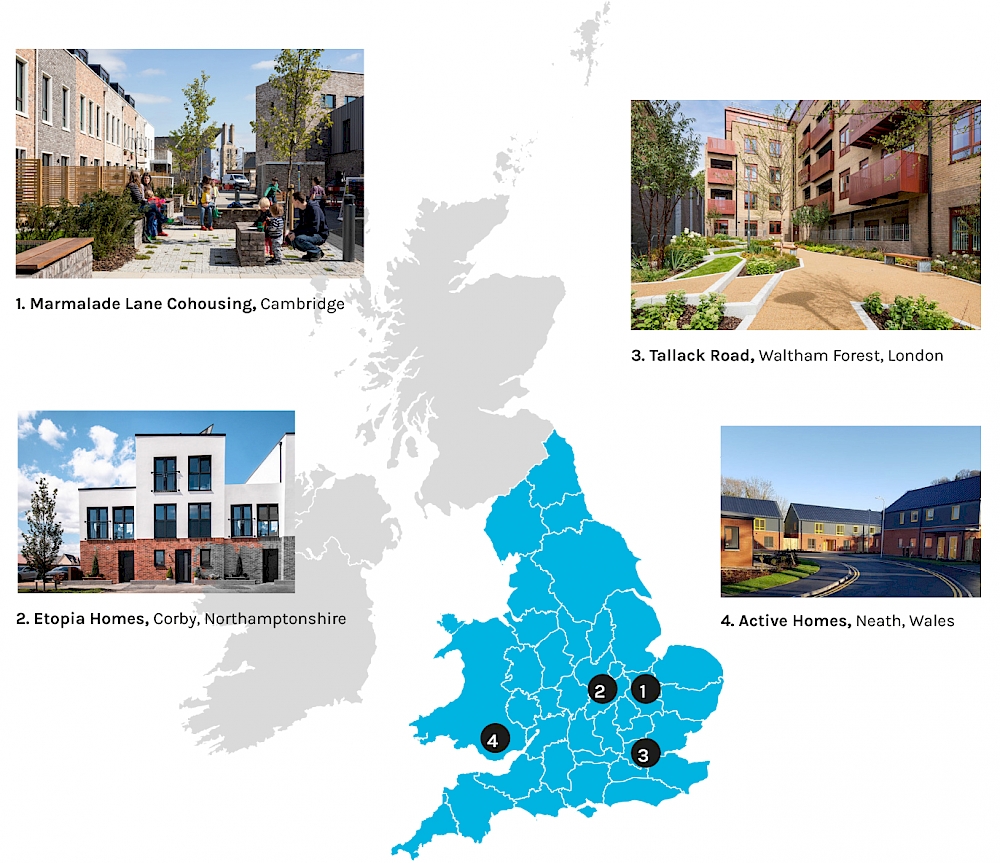
This holistic evaluation incorporates the views of multiple stakeholders and draws upon case study homes, the wider construction industry, and the energy services sector. A wide-ranging consumer survey and a general industry survey further contributed to the findings.
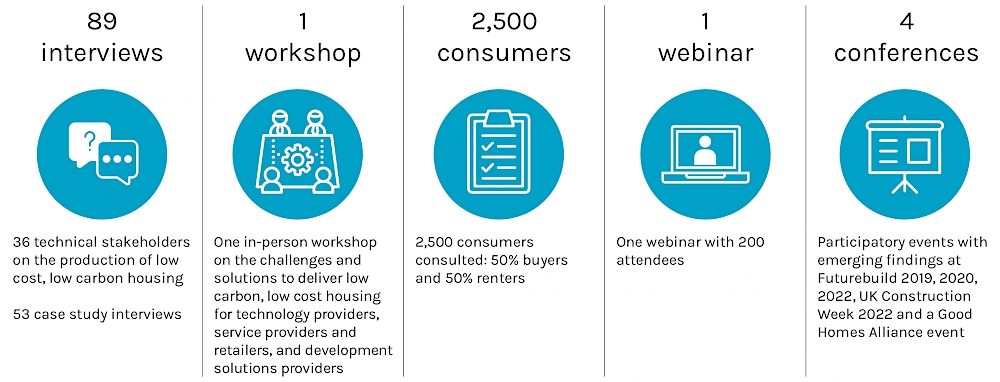
The project was led by infrastructure consultancy AECOM and supported by Pollard Thomas Edwards (PTE), Fourwalls, and LCP Delta (incorporating Delta-EE).

Pollard Thomas Edwards brought expertise in the design of housing including low carbon housing, modern methods of construction, research and guidance to the industry on low carbon homes, undertook on-site audits, assessed the performance gap, and conducted interviews with building professionals. The in-house communications team led the traditional and innovative dissemination of the project results.
To read the Executive Summary click here
To read the full report click here
For more information please visit: www.buildingfor2050.co.uk


